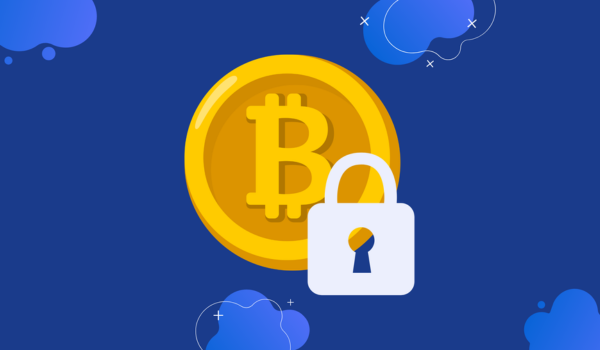Introduction
Hook: Start with a compelling fact or statistic about Bitcoin theft or hacking incidents.
Example: Mention a recent high-profile Bitcoin theft to capture attention.
Thesis Statement: Introduce the main focus of the post–practical steps and strategies to protect your Bitcoin investment.
Example: “In this post, we will explore essential strategies to secure your Bitcoin investments against common threats.”
Purpose: Explain why Bitcoin security is crucial for investors.
Example: Highlight the growing value of Bitcoin and the increasing sophistication of cyber threats.
Section 1: Understanding Bitcoin Security
What is Bitcoin Security?
Definition: Explain what Bitcoin security entails.
Example: “Bitcoin security refers to the measures taken to protect Bitcoin from theft, hacking, and other threats.”
Importance: Highlight the importance of securing Bitcoin investments given its digital nature and the risks involved.
Example: Emphasize that, unlike traditional assets, Cyber currency is a digital asset that can be vulnerable to cyber-attacks.
Section 2: Common Threats to Bitcoin Security
Phishing Attacks
Description: Explain what phishing attacks are and how they target Bitcoin investors.
Example: Describe phishing as fraudulent attempts to obtain sensitive information by masquerading as a trustworthy entity.
Prevention: Tips to recognize and avoid phishing scams.
Example: Advice on checking URLs, avoiding clicking on unknown links, and being wary of unsolicited emails.
Malware and Ransomware
Description: Discuss how malware and ransomware can compromise Cyber currency wallets.
Example: Explain that malware can steal private keys and ransomware can lock users out of their wallets.
Prevention: Advice on keeping devices secure and avoiding suspicious downloads.
Example: Recommend using antivirus software, keeping systems updated, and not downloading from untrusted sources.
Hacking
Description: Describe common hacking methods that target Bitcoin.
Example: Mention techniques like brute force attacks and exploits of vulnerabilities in software.
Prevention: Steps to secure your accounts and wallets from hackers.
Example: Suggest using strong, unique passwords and keeping software up to date.
Section 3: Best Practices for Securing Your Bitcoin
Use Strong, Unique Passwords
Details: Importance of strong passwords and using password managers.
Example: Explain that strong passwords are harder to crack and password managers help in managing them securely.
Tips: How to create strong passwords and manage them effectively.
Example: Use a mix of letters, numbers, and symbols, and avoid using the same password across multiple sites.
Enable Two-Factor Authentication (2FA)
Details: Explain what 2FA is and how it adds an extra layer of security.
Example: Describe 2FA as requiring a second form of verification in addition to a password.
Implementation: Steps to set up 2FA on Cyber currency wallets and exchanges.
Example: Provide instructions for setting up 2FA on popular Bitcoin wallets and exchanges.
Choose a Secure Wallet
Types of Wallets: Overview of different wallet types (hardware, software, paper).
Example: Explain the pros and cons of hardware, software, and paper wallets.
Recommendations: Best practices for choosing and using a secure Bitcoin wallet.
Example: Suggest using hardware wallets for long-term storage and keeping software wallets updated.
Keep Your Private Keys Safe
Details: Importance of private keys in Cyber currency security.
Example: Describe private keys as the critical piece of information needed to access Bitcoin.
Storage Tips: Safe storage methods for private keys.
Example: Recommend keeping private keys offline and in a secure location.
Section 4: Advanced Security Measures
Cold Storage
Explanation: Define cold storage and its benefits for Bitcoin security.
Example: Explain that cold storage keeps Bitcoin offline and away from internet-based threats.
Implementation: How to set up and use cold storage.
Example: Provide steps for setting up a cold storage wallet, such as using a hardware wallet or creating a paper wallet.
Regular Security Audits
Details: The importance of conducting regular security checks on your devices and wallets.
Example: Emphasize that regular audits can help identify and fix vulnerabilities.
Steps: How to perform a security audit and what to look for.
Example: Suggest checking for software updates, reviewing account activity, and scanning for malware.
Secure Backup
Details: The necessity of having secure backups of your Cyber currency wallet.
Example: Explain that backups protect against data loss due to device failure or theft.
Methods: Best practices for creating and storing backups safely.
Example: Recommend creating multiple backups and storing them in different secure locations.
Section 5: Staying Informed and Vigilant
Stay Updated on Security News
Importance: Keeping up with the latest security threats and news.
Example: Highlight the fast-changing nature of cybersecurity and the importance of staying informed.
Resources: Reliable sources for Bitcoin security news and updates.
Example: Suggest following reputable cybersecurity blogs, forums, and news sites.
Continuous Learning
Details: Importance of continuous education on new security practices and technologies.
Example: Emphasize that ongoing education helps in staying ahead of emerging threats.
Suggestions: Courses, webinars, and forums for staying informed.
Example: Recommend online courses, attend webinars, and participate in cryptocurrency security forums.
Conclusion
Summary: Recap the key points discussed in the post about Cyber currency security.
Example: Summarize the importance of strong passwords, 2FA, secure wallets, cold storage, and staying informed.
Call to Action: Encourage readers to implement the security measures discussed to protect their Bitcoin investment.
Example: Urge readers to take immediate steps to secure their Bitcoin.
Engagement: Invite readers to share their tips and experiences with Cyber currency security in the comments.
Example: Ask readers to contribute their security strategies and any experiences they’ve had with securing their Bitcoin.















